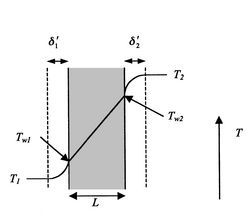teknomania
Mechanical
- Nov 22, 2007
- 26
Hello,
I have the task of experimentally measuring the radiator performance according to varying outdoor temperature degrees.
My plan for the test setup is to equip one box in another bigger box. The inner box (the heated space) will involve a radiator. While the volume between the inner box and the outer box will be cooled so the heat loss from the heated space will be satisfied.
The problem here is that how large the space between the inner and outer box should be so that the medium there can represent the outside air medium i.e. equipping a small volume there can cause unusual high local temperature increase close to the heat losing wall and/or continuous supply of chilled air to this space may deteriorate the temperature change pattern (as it should be through the heat loss). What I plan is to have a large gap between the boxes as maximum possible. But any method to determine that space volume? Or any idea with different approach of mine generally for the whole experimental setup?
Regards.
I have the task of experimentally measuring the radiator performance according to varying outdoor temperature degrees.
My plan for the test setup is to equip one box in another bigger box. The inner box (the heated space) will involve a radiator. While the volume between the inner box and the outer box will be cooled so the heat loss from the heated space will be satisfied.
The problem here is that how large the space between the inner and outer box should be so that the medium there can represent the outside air medium i.e. equipping a small volume there can cause unusual high local temperature increase close to the heat losing wall and/or continuous supply of chilled air to this space may deteriorate the temperature change pattern (as it should be through the heat loss). What I plan is to have a large gap between the boxes as maximum possible. But any method to determine that space volume? Or any idea with different approach of mine generally for the whole experimental setup?
Regards.

